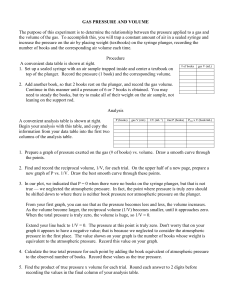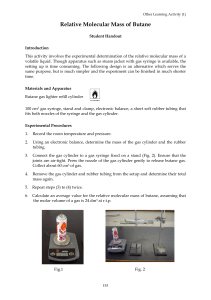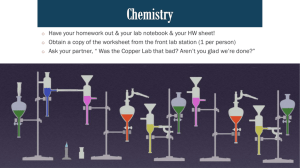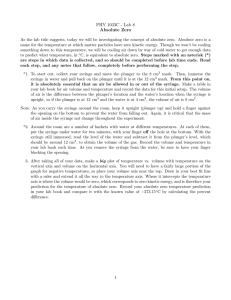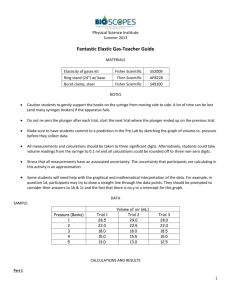What does the larynx actually produce that we can hear?
advertisement
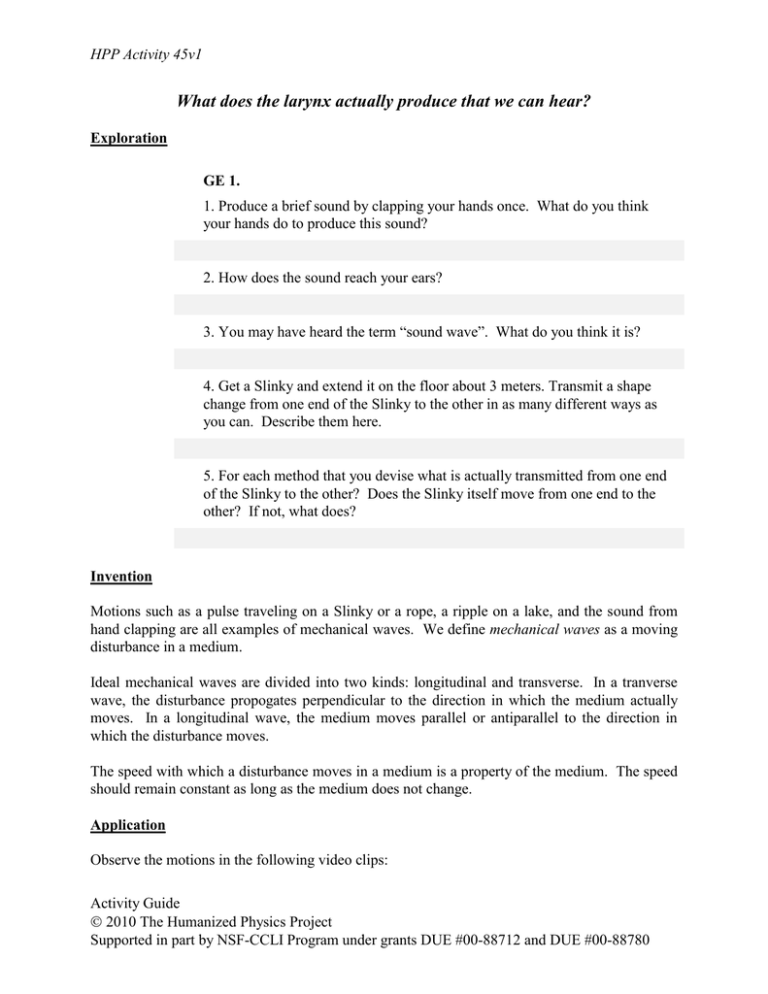
HPP Activity 45v1 What does the larynx actually produce that we can hear? Exploration GE 1. 1. Produce a brief sound by clapping your hands once. What do you think your hands do to produce this sound? 2. How does the sound reach your ears? 3. You may have heard the term “sound wave”. What do you think it is? 4. Get a Slinky and extend it on the floor about 3 meters. Transmit a shape change from one end of the Slinky to the other in as many different ways as you can. Describe them here. 5. For each method that you devise what is actually transmitted from one end of the Slinky to the other? Does the Slinky itself move from one end to the other? If not, what does? Invention Motions such as a pulse traveling on a Slinky or a rope, a ripple on a lake, and the sound from hand clapping are all examples of mechanical waves. We define mechanical waves as a moving disturbance in a medium. Ideal mechanical waves are divided into two kinds: longitudinal and transverse. In a tranverse wave, the disturbance propogates perpendicular to the direction in which the medium actually moves. In a longitudinal wave, the medium moves parallel or antiparallel to the direction in which the disturbance moves. The speed with which a disturbance moves in a medium is a property of the medium. The speed should remain constant as long as the medium does not change. Application Observe the motions in the following video clips: Activity Guide 2010 The Humanized Physics Project Supported in part by NSF-CCLI Program under grants DUE #00-88712 and DUE #00-88780 HPP Activity 45v1 2 singleSlinky1.mov singleSlinky2.mov wavew1.mov wavem1.mov GE 2. 1. Classify the wave motions as primarily longitudinal or transverse. Specify your evidence. 2. Take position versus time data for the pulses shown in singleSlinky1.mov and singleSlinky2.mov. Make graphs of each and place them here. 3. In each case, is the velocity of the pulse constant? Exploration What is the propagating disturbance associated with a sound wave? To investigate this question we must develop the concept of pressure. GE 3. 1. Put a Styrofoam cup on the floor and stand on it. What happens? 2. What was the force that you exerted on the cup when you stood on it? 3. Put about 24 cups on the floor. Place a board on top of them. Stand on the board. What happens? 4. What was the force that you exerted on the cup when you stood on it? Invention The pressure concept combines force exerted on a surface and the area over which that force is exerted into one number. Let F be the force exerted on a surface of area A. We define the pressure P exerted on the surface as Activity Guide 2010 The Humanized Physics Project HPP Activity 45v1 P 3 F A (5) The SI unit of pressure is the Pascal, [Pa]. Application Obtain a large syringe, pressure sensor, and a force probe. Make sure workgroups in the class choose syringes with at least two different diameters. Clamp the syringe vertically with the plunger on top. Connect the pressure sensor to the syringe tip. Set up Data Studio so that you can measure the pressure in the syringe and the force acting on the force probe simultaneously. There should be a Data Studio activity file called PvsF.ds, which does this. Let the instructor show you how to work the valve on the pressure sensor. We are going to check whether equation (5) adequately describes the relationship between pressure, force, and cross-sectional area for the gas inside the syringe. GE 4. 1. Consider an equilibrium situation for the syringe. How should the pressure at the bottom of the syringe compare with the pressure at the top, where the plunger makes contact with the gas? 2. If we push on top of the plunger, thereby incrementing the force applied to the gas, and then measure the corresponding pressures how would you expect a graph of pressure versus total incremented force to look? Give reasoning for your prediction. 3. We can obtain a record of pressure in the gas versus the force applied to the gas by letting the computer record the pressure and exerted force simultaneously as we slowly push the plunger in, or if you have already compressed the gas then let the computer measure pressure and force as you slowly release the plunger. The second method probably gives better data. Using one of these techniques, produce a graph of P versus applied F. Place it here. 4 Does the graph look as you expected? 5. Obtain data for a group who used a syringe with a different cross-sectional area. Describe their data here. Activity Guide 2010 The Humanized Physics Project HPP Activity 45v1 4 6. How does the second syringe data compare to your syringe data? 7. Is the difference consistent with equation (5)? Invention Sound is a wave of pressure variation that propagates through a gas or solid. Consider a long, gas-filled cylinder with a piston on one end. Right now, the pressure is uniform throughout the cylinder. Let’s call this normal pressure P0. Now we push the plunger into the cylinder. This causes a compression of the gas molecules. Now we pull the plunger back out of the cylinder. This causes a rarefaction of the gas, as shown. The compression/rarefaction pattern will now move down the cylinder. A crucial point about this picture is that while the pressure variation travels down the cylinder, the gas particles do not. They move back and forth over a relatively small distance. The picture is very similar to the motion of Slinky coils in a longitudinal wave. Activity Guide 2010 The Humanized Physics Project HPP Activity 45v1 5 Application GE 5. 1. The figure below shows a pressure disturbance in the cylinder discussed above at a particular instant of time. Draw a qualitative graph of pressure in the cylinder as a function of position along the cylinder axis. P x 2. The figure below shows the sound wave a few milliseconds later. Draw the new pressure as a function of position at this instant of time. P x 3. Instead of plotting the actual pressure at a particular position, we will sometimes plot the change, P from normal pressure (P0). Redraw the previous graph plotting P versus x instead of P. Activity Guide 2010 The Humanized Physics Project HPP Activity 45v1 6 P x Activity Guide 2010 The Humanized Physics Project
